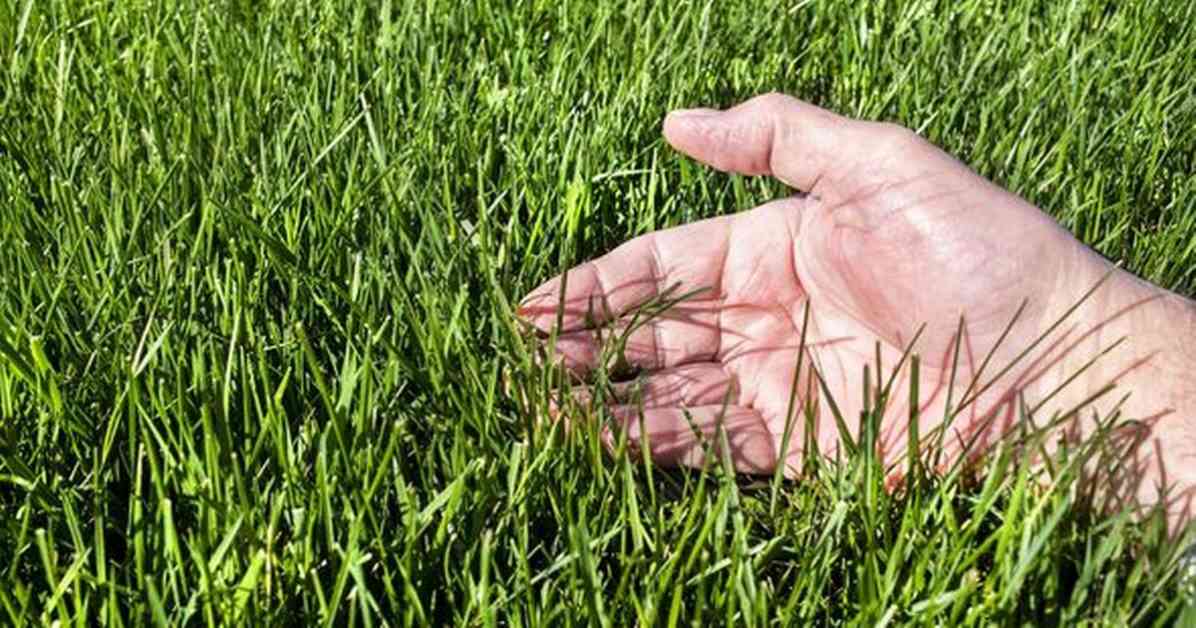Transform Your Lawn with Essential Kitchen Scrap Ingredient: Get a Greener Garden Today
Maintaining a lush, green lawn can be a daunting task, but with the right fertiliser, you can ensure your grass stays healthy and vibrant. As we head into September, it’s vital to nourish your lawn with essential nutrients to promote robust growth during the autumn months. Andrew Huber, a lawncare expert from The Lawn Squad, has shared his top tip for preparing your grass for a “lush, deep green lawn” without splashing out – by creating a homemade DIY fertiliser. He emphasized the importance of fertiliser not just being about making your grass grow, but about nurturing a landscape that can withstand the tests of nature and time. A robust lawn is your first defence against pests, diseases, and environmental stresses.
Creating an Effective Homemade Fertiliser
To ensure your lawn receives the necessary nutrients, it’s crucial to include nitrogen, potassium, and phosphorus in your fertiliser. These nutrients are essential for maintaining a healthy lawn, as reported by the Express. One of the best ways to achieve this while also reducing food waste and saving money is by turning your kitchen scraps into fertiliser. Andrew Huber recommends utilizing banana peels, fish scraps, vegetable peelings, and coffee grounds to create a nutrient-rich mixture that will benefit your lawn. By repurposing kitchen leftovers, you not only contribute to a greener garden but also reduce waste in an eco-friendly manner.
Banana peels, rich in potassium and phosphorus, make a fantastic addition to your fertiliser. Fish scraps and vegetable peelings like potatoes or carrots, which also contain phosphorus, will easily break down on a lawn. For a nitrogen-rich boost, it’s the coffee grounds that really make a difference as they promote lush grass growth. Andrew shared: “Coffee isn’t just my morning essential, it’s also great for my lawn. Nitrogen-rich coffee grounds can be sprinkled on the lawn or mixed with water (about half a pound of coffee grounds to five gallons of water) to create a nutrient-packed lawn tonic.” Experimenting with different kitchen scraps and finding what works best for your lawn may require some trial and error, but the results are well worth the effort.
Applying Your Homemade Fertiliser
Once you have the right components for your DIY fertiliser, it’s essential to mix them in water, let them decompose completely, and then use this mixture to nourish your lawn. Before applying the homemade solution, make sure to mow the lawn a few days in advance and water it to allow for better nutrient absorption. Checking the weather forecast is also crucial to avoid heavy rain washing away the fertiliser once it’s been applied.
Andrew recommends using a backpack sprayer to evenly distribute your DIY fertiliser across the lawn. Walk back and forth while spraying to ensure consistent coverage, and follow up with a gentle watering to help the nutrients penetrate the soil. Monitoring your lawn’s response after treatment is essential to ensure the balance of nutrients remains optimal. Andrew emphasized the importance of vigilance: “Monitoring your lawn’s response is crucial for determining the effectiveness of your DIY fertiliser. I always keep a close eye on grass growth and color changes. Additionally, conducting a soil test before starting my fertilisation regime ensures that I’m not overdoing or underdoing certain nutrients.”
Benefits of Using Kitchen Scraps as Fertiliser
Repurposing kitchen scraps as fertiliser not only benefits your lawn but also contributes to a more sustainable environment. By reducing food waste through composting, you can create a nutrient-rich soil that promotes healthy plant growth. Additionally, using homemade fertiliser eliminates the need for harmful chemicals that can have adverse effects on the environment and wildlife. By adopting a more eco-friendly approach to lawn care, you not only improve the aesthetics of your garden but also play a part in preserving the ecosystem.
Investing in Your Lawn’s Health
Taking the time to create and apply a homemade fertiliser using kitchen scraps is a worthwhile investment in the health and vitality of your lawn. By utilizing natural ingredients that are rich in essential nutrients, you can ensure that your grass stays lush and green throughout the year. Experimenting with different kitchen leftovers and observing how your lawn responds to various fertiliser mixtures can help you tailor your approach to suit the specific needs of your garden. With a little effort and creativity, you can transform your lawn into a thriving oasis that enhances the beauty of your outdoor space.
In conclusion, incorporating kitchen scraps into your lawn care routine is a cost-effective and eco-friendly way to promote healthy grass growth. By creating a homemade fertiliser using ingredients like banana peels, fish scraps, vegetable peelings, and coffee grounds, you can provide your lawn with the essential nutrients it needs to thrive. By following Andrew Huber’s tips for preparing and applying DIY fertiliser, you can achieve a lush, deep green lawn without breaking the bank. So why not give it a try and see the transformative effects of kitchen scraps on your garden today?













